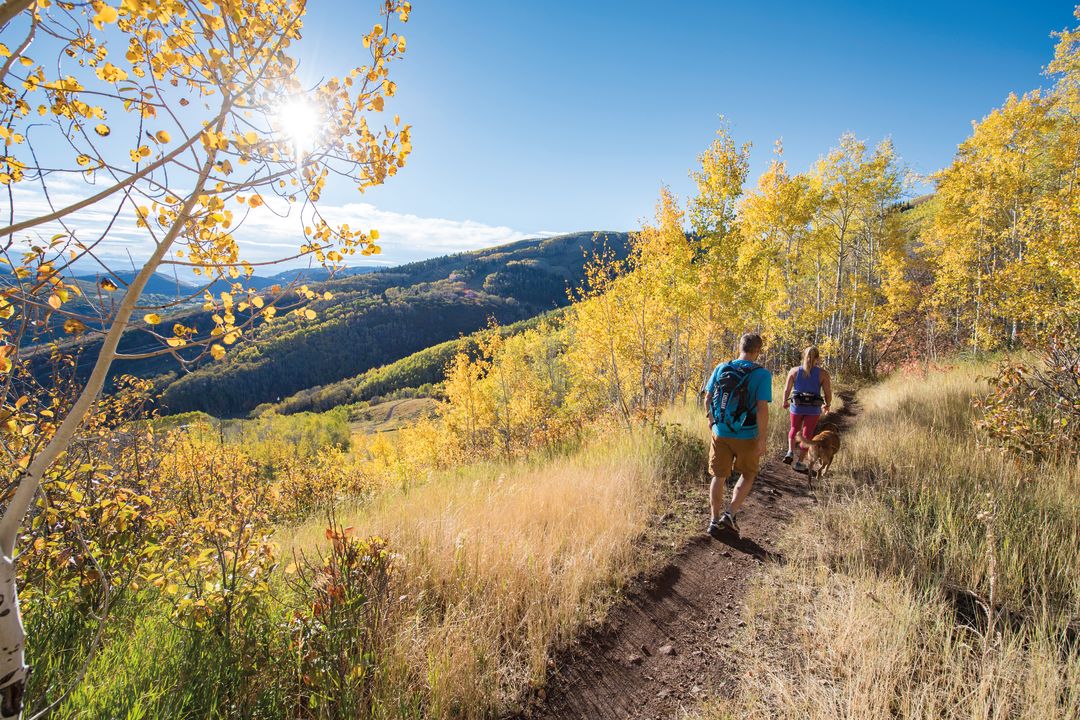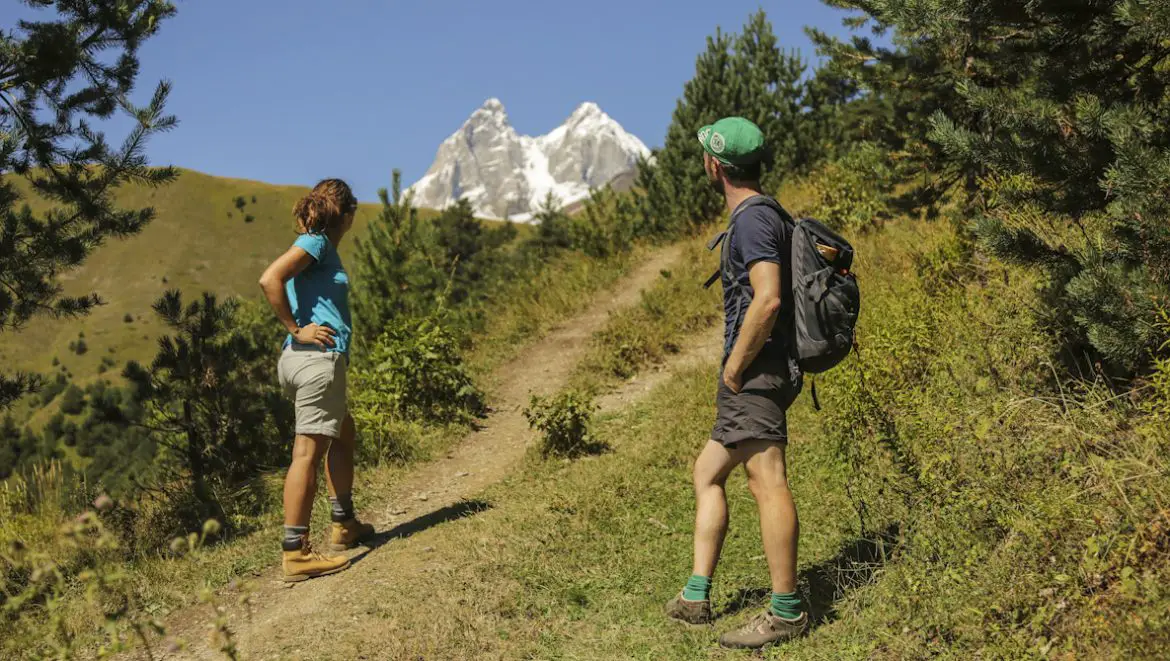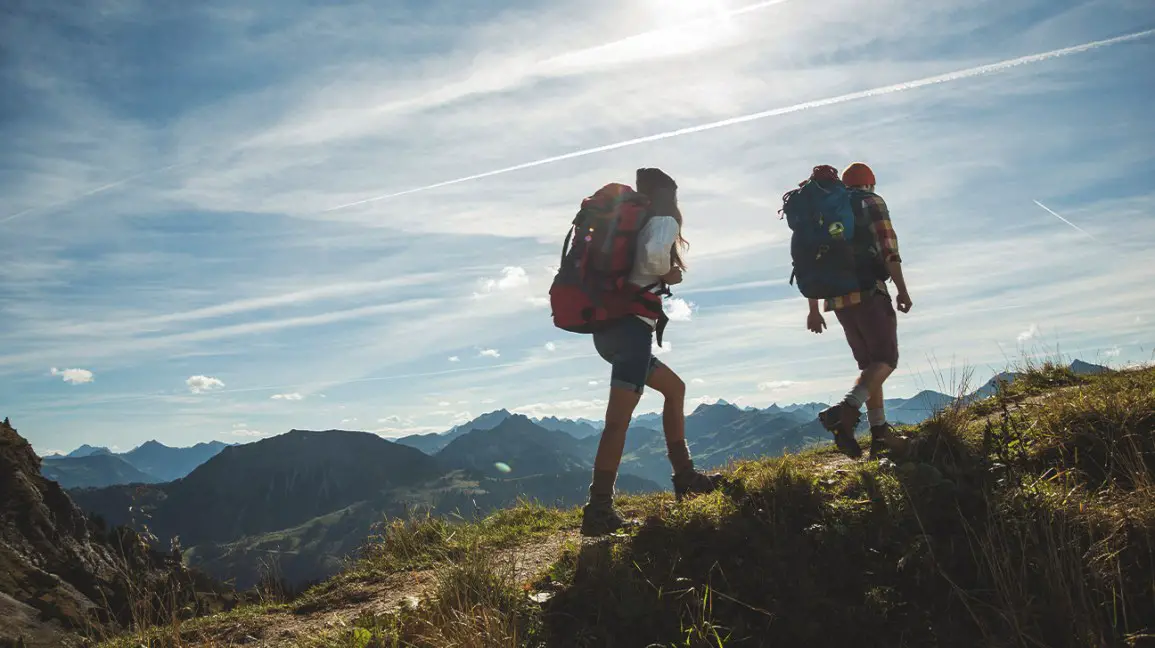Hiking in shorts or hiking in pants, what it’s the best option?
Many new hikers commonly have these questions regarding what to wear when out on the trail and with so many choices, it can be confusing to decide what to choose.
Well, not anymore, because in this article will help you decide on the best option for your trip!
Hiking in Shorts vs Pants: what to wear
Whether you should hike in shorts or not depends entirely on the type of trip you're planning and where you'll be hiking, long pants are the safest option for trekking in any climate, although shorts are more comfortable in warmer weather.
Shorts should only be worn if the hike is brief and it's not recommended for long trips. Shorts are a good choice for warm weather or summer since they are comfortable, allow for more movement, and are cooler than pants.
The downside of wearing shorts when hiking is that you are more susceptible to bug stings, skin irritations from trails, and knee cuts or scars.
However, for a long trip in cooler temperatures, wearing pants is excellent choice. Pants also protect your leg from dangerous pigments or poison from a variety of plants you may encounter on a thickly vegetated trail
Hiking Shorts
Pros
Cons
When you can hike in Shorts?
Despite the fact that we encourage wearing pants for hiking for extra protection, shorts are exceptionally comfortable for hiking. And if the conditions are favorable, you'll be alright.
- If you are planning a short or lengthy hike taking less than a day in warm weather on a trail graded simple to moderately challenging.
- if the bug levels are low enough that they do not disturb you, or if you have appropriate protection. Spray works great, however it must be used on a regular basis. Shorts work great if you're comfortable with reapplying bug spray or lotion frequently, or if you're really fortunate to be in a place where there aren't a lot of bugs.

Do you really need hiking pants?
Shorts are usually worn more on summer hikes and Many hikers don't bother with pants. However, it is up to you to decide which are most comfortable for you. Your hiking pants can be worn whenever you desire. However, this might be difficult, especially on rainy days, because the cloth may discolor from the moisture.
in my opinion you can’t always predict when the Mother Nature will throw a downpour in your way, so investing in a good pair of waterproof pants that are made from synthetic nylons is very helpful, It can keep you to stay warm, especially in cold conditions and protects your skin from harmful plants and trails.
Should you wear long pants when hiking?
Like I mentioned earlier, you may wear either short or long pants, but before you do, you need think about a few things you can meet on the trip. check your requirements for safety, the terrain you’re hiking in, the presence (or absence) of biting insects, the amount and type of vegetation on the trail.
When it comes to safety, you should plan ahead for the hike and length of your trip. Include the season or the difference between night and day weather conditions. If your hike may take many days or overnight, long pants are advised.

Can I Wear Running Shorts for Hiking?
Yes, you can wear running shorts for hiking, especially in hot places. They’re extremely breathable, comfortable, and offer more range of motion. There are various advantages and disadvantages to it. but mostly Running shorts are exclusively worn in track and field activities nowadays.
Hiking shorts & pants vs Running shorts:
What’s the difference?
Hiking shorts/pants are typically made of nylon and are quick-drying, stretchable, and relatively lightweight. In the shape of cargo pants, they usually have a lot of pockets.
On the other hand, running shorts are the lightest type of shorts. The use of running shorts is already popular for trail runners.
The running shorts are constructed of polyester and nylon, which are both stretchy and quick-drying fabrics. The majority of them also include a built-in layer that wicks moisture away from your skin to keep you feeling fresh and prevent friction.
Running shorts top features:
- They are incredibly light
- Maximum comfort
- Prevents chafing
- Incredible range of motion
- Very breathable
Which one is the best option?
Both of them, in my opinion, have something special to offer. Which one is preferable depends on your circumstances.
Hiking pants/shorts protect your legs from scratches better . They also provide you with more storage space for your belongings. Hiking pants, on the other hand, are less breathable and heavier than running shorts.
mostly using hiking pants are more preferable on longer hikes ,when camping it’s usually colder at night.
Wearing running shorts on a day trip is excellent because they allow you to cover longer distances in less time. This requires moving quicker and perhaps running on instances.
What Type of Shorts Should I Wear When Hiking?
since we now know when right time to wear hiking shorts and when it's not, we can go on to the next step.
When it comes to shorts and hiking, it's important to understand that not all shorts are created equal. This is why putting on any random pair of shorts and hitting the trails isn't a good idea.
so If you intend to hike in shorts the best type of shorts would be hiking shorts that are specifically designed for hiking.
what should you not wear when hiking
When hiking, the most important thing to keep in mind is to avoid wearing cotton or denim. Why? Cotton absorbs water and takes a long time to dry. As a result, if your cotton shirt or jeans become wet, you'll be wet and uncomfortable for the whole hike. Instead, consider moisture-wicking materials such as polyester and synthetics.
other consideration:
what to wear while hiking
Materials
The best HIKING CLOTHES are built of synthetic materials that keep you dry when you begin to put more effort and sweat. If you're tempted to put on that lovely cotton top, resist! It will simply retain sweat and moisture, keeping you cool by keeping you wet. If you're climbing a mountain and the temperature drops, you'll get the chills in no time.
Soft, lightweight, and moisture-wicking textiles are ideal. TECHWICK is an excellent example of such a fabric, which may be worn as a skin-tight base layer or a T-shirt. You'll find that synthetic textiles, such as polyester, let your body to breathe considerably more freely, releasing pent-up heat.
Layering
Always consider that the temperature will decrease dramatically when hiking, especially if you're going higher in elevation. A three-layer clothing strategy is one of the finest ways to be protected against environmental circumstances. Wear a lightweight, moisture-wicking clothing as your base layer. Pull a light- or medium-weight fleece from your HIKING BACKPACK if it gets cold, and then wear an outer shell to keep out the wind and rain.
The appropriate hiking clothing might mean the difference between staying comfortable and focused on your adventure and getting wet, sunburned, sweaty, and scraped. So you enjoy your time outside.
Comfort
The biggest benefit of wearing shorts is that they are quite comfortable. Many locations are hot and humid, and wearing pants only adds to the problem.
Many skilled hikers wear lightweight synthetic shorts or running shorts and there's no arguing with the unrestricted freedom of wearing shorts, no matter how well-ventilated hiking pants claim to be.

Conclusion
In general, everybody can wear whatever they want on a trip, but only a true hiker or traveler will recognize the difference between hiking in shorts vs hiking in pants. When going out, it is critical to select the appropriate attire. Weather or season, trail safety, surroundings look, other demands, and the sense of wearing it.
For more related guides read my other posts:
About the Author

Hussain is a passionate hiker and traveler that love the outdoor and enjoys what nature has to give, whenever he can he love to write and give tips & honest reviews to help others get out there and just seek more unforgettable experiences
